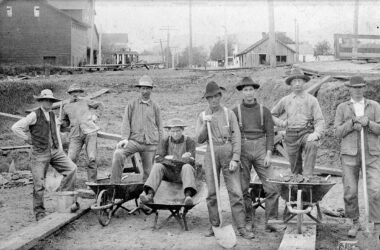Last week’s winter storm brought ice and snow to much of the Willamette Valley and heavy rain to the entire Oregon coast, completely suspending the winter steelhead season from one end of the state to the other.
In the Siuslaw and Alsea river drainages, the precipitation fell as a mixture of snow, sleet, and frozen rain. Consequently, for several days, frozen highways made travel through the coastal mountain ranges impossible from about Florence northward. But as I prepare this week’s report, Highway 126, between Eugene and Florence, where thousands of trees and tree limbs had fallen under the weight of the freezing rain, is again open after being shut down for nearly a week.
Aside from the impossible travel conditions, the precipitation kept most steelhead rivers on the high side, yet still manageable. But except for a handful of locals, angler pressure has been near very light. Both waterways could reach fishable levels by the weekend.
Good fishing to the south
To the south, on the Main Umpqua River, the precipitation was mostly liquid and also fell in generous proportion. Pushing the Main Umpqua River at the river gage near Elkton, to the brink of its 35-foot “flood stage,” which equates to an astounding river flow of 114,415 CFS (cubic feet per second).
Now that is a lot of water and unlike the Alsea and Siuslaw, it is gonna take the big Umpqua a couple of weeks to heal. When it does, in the jet sled, I find good fishing starts as the river falls to about nine feet on the Elkton. In the driftboat I find 5 feet and falling to be ideal.
On the smaller rivers, the bank fishing section on the North Fork of the Alsea above Mill Creek becomes productive when the river at Tidewater reads 7.5 feet and falling. Downstream from Mill Creek where driftboats are allowed, a gage reading of 6.5 feet and falling is about perfect for quality driftboat steelheading. On the Siuslaw River the gage is near Mapleton – look for a river stage of 8 feet and falling.
Adapting is key
As usual for mid-January, all the variables are in play and adapting to the conditions is key to success. After last week’s ice storm, water temperatures plummeted in every steelheading river in the state – by about 12 degrees in the Umpqua River and 12 to 13 degrees lower in smaller streams. Dropping ambient water temperatures to the low 40s and upper 30s. At those temperatures the fish’s metabolism slows and they become difficult to entice. The trick is to slow your presentation as it moves through the holding water. My favorite technique in coldwater conditions is always going to be back-trolling a diving plug. I’ll slowly row against the current, moving downstream a few inches at a time, with the plug working about 45 feet ahead of my driftboat. At times I will completely stall the boat in mid-current, allowing my plugs to dangle in prime pockets of water, giving holding steelhead time to respond. When fishing from the bank, in cold water conditions, I always revert to “old school” drift fishing, with enough weight that my corky/bead and salmon eggs cocktail drifts downstream at about a quarter of the speed of the current.






